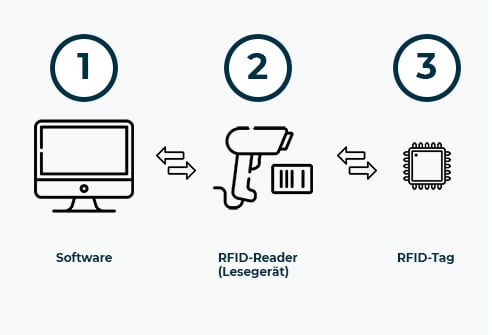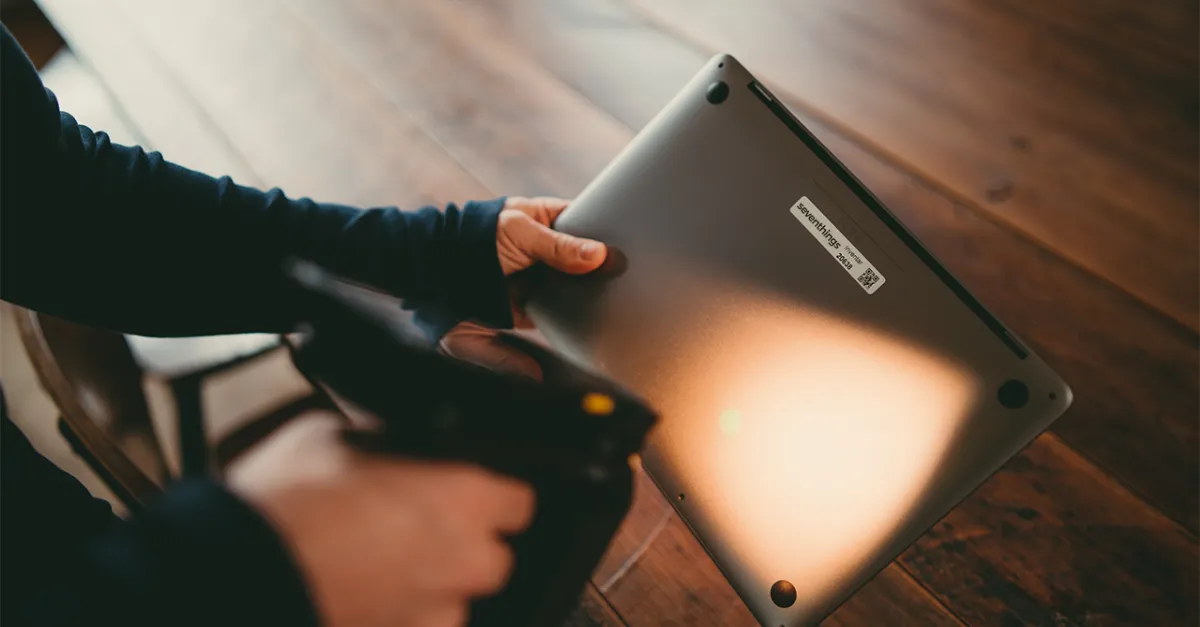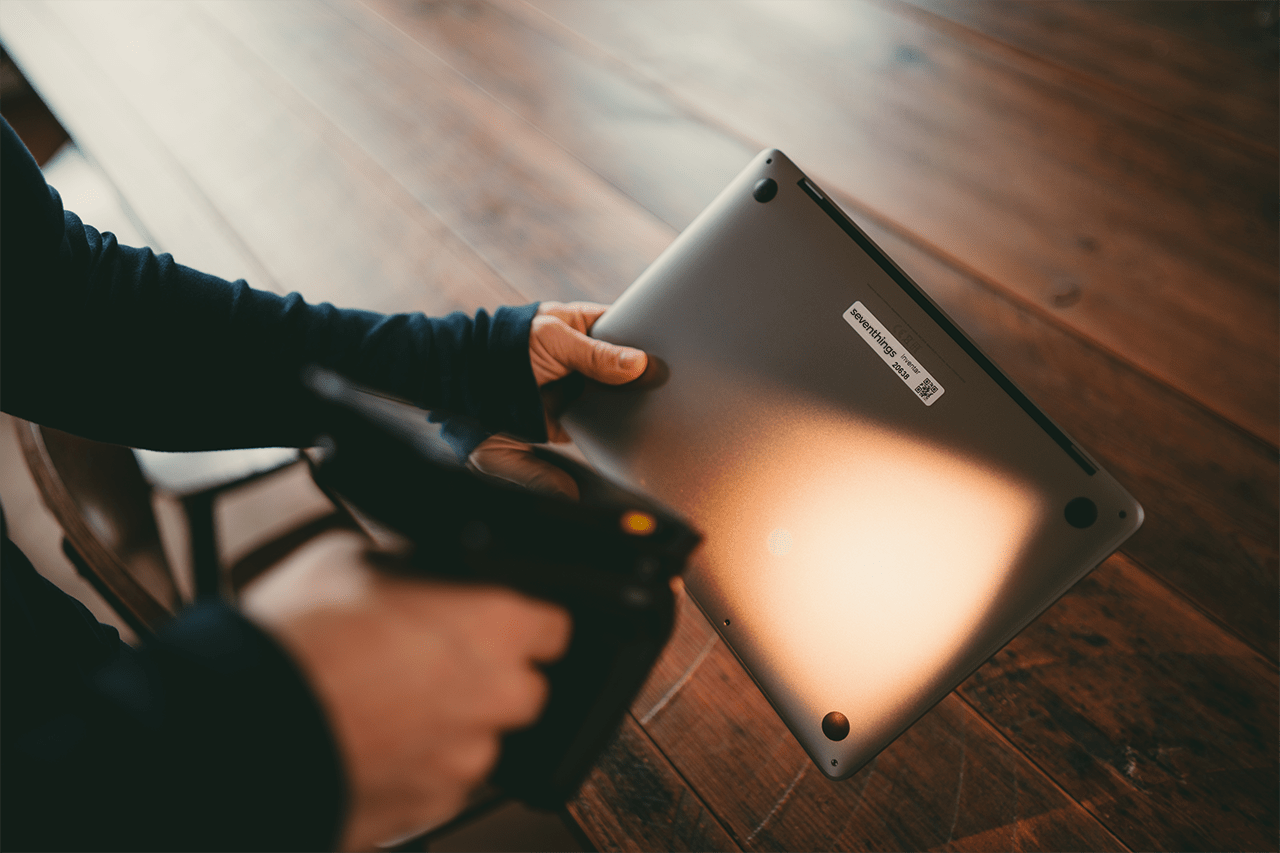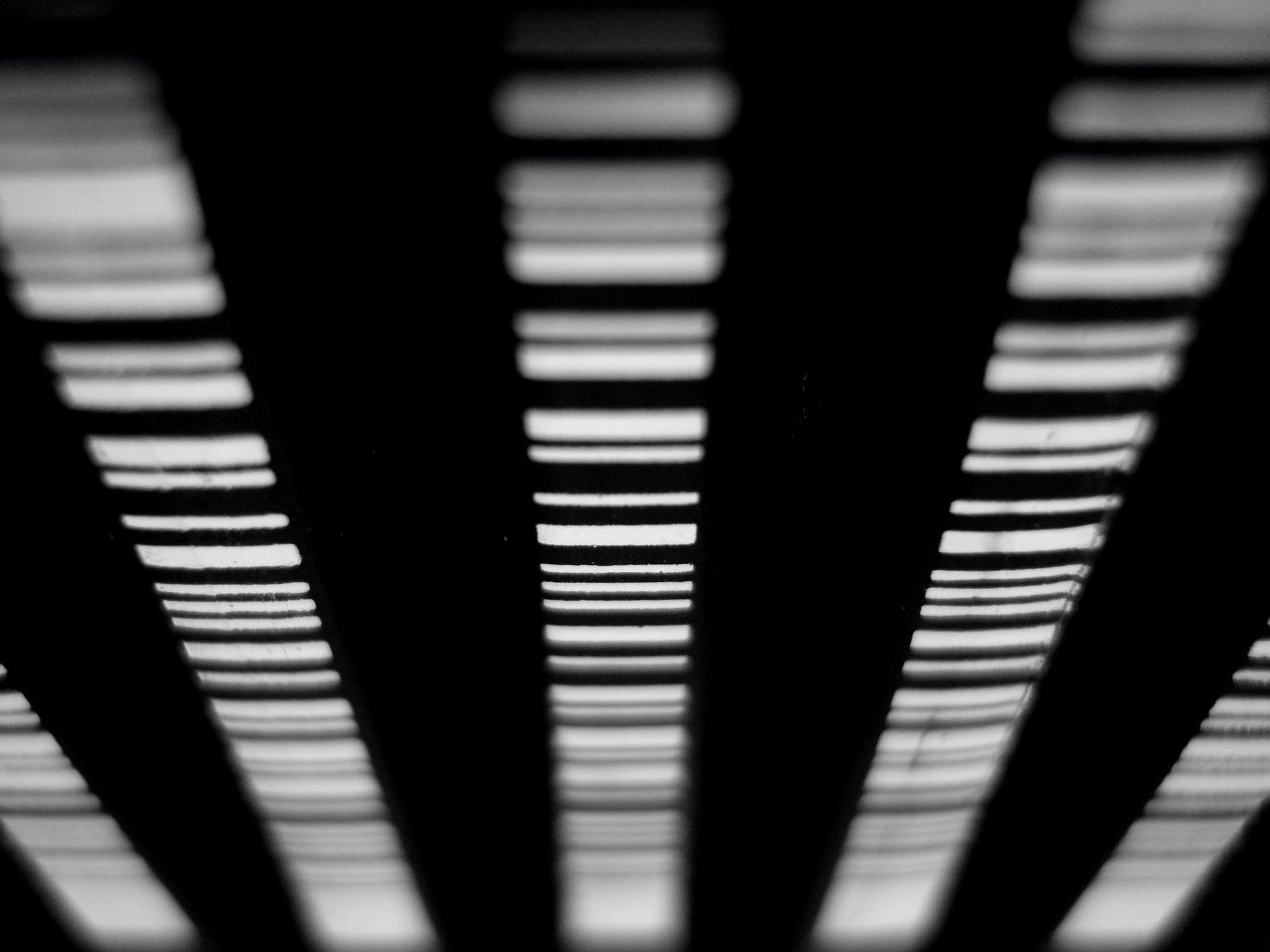You've probably heard the acronym "RFID" somewhere before. But even though most of us come in contact with this technology on a daily basis, few people know what excatly it is, much less how it works. In this blog entry, we've compiled the most important information you need to know about RFID technology, making a seemingly complex topic easily understandable.
- What does RFID stand for?
"RFID“ is an acronym for "Radio Frequency Identification“. The name is the game in this case - it basically allows for the localization and identification of radio frequencies.
What makes RFID technology so special, is the contact free identification of RFID tags, which contain all relevant data to the object they are attached to. This means, in order to track these tags, it's not necessary to scan the labels or even locate the tagged objects specifically. All you need is an RFID reader, that moves past the objects at a minimum distance of 6 meters.

- How is RFID technolgy utilized?
An RFID Tag is basically memory chip that stores individual data, which can be accesed at anytime.
The process of recalling this data is as follows:
- The data on the RFID tag is requested by the RFID reader
- The signal from the RFID reader is detected by the transponder in the RFID label
- The requested data is transfered from the RFID tag to the RFID reader, and is ultimately compared and updated in the operating software.
Standard identification of objects via a barcode, only allows for data collection by physically locating and scanning the label on an object. The RFID tags on the other hand, have a so-called "read-only" transponder, which doesn't require physical location; being in proximity to this transponder is enough to retrieve data from this transponder.
Even though most people don't know about RFID technology, we encouter it on a daily basis. RFID technology is used in microchips on pets, automatic doorlocks, in personal IDs, contact-free payment methods or theft deterrant tags on various goods. The possisibilities of this technology seem endless!
Many companies use RFID technology in order to identify and locate items with miniaml effort. These obejtcs can include things like funiture or hardware, for example a laptop, but also tools or machines. Depending on the object, RFID tags vary in size and memory space, making them easily tailored to the needs of a comapny.

- What are the advantages of using RFID technology?
- Registering data with no tag - reader intervisibilty
- Optimization of operating processes
- Extremely quick data retrieval
- No error margin due to manual data entry
- Simultanious identification of multiple objects
- Adjustibility to varying company needs
- Long term cost efficiency
- Increased productivity and profitability within the company
- Resitant to environmental conditions (e.g. dirt or moisture)



